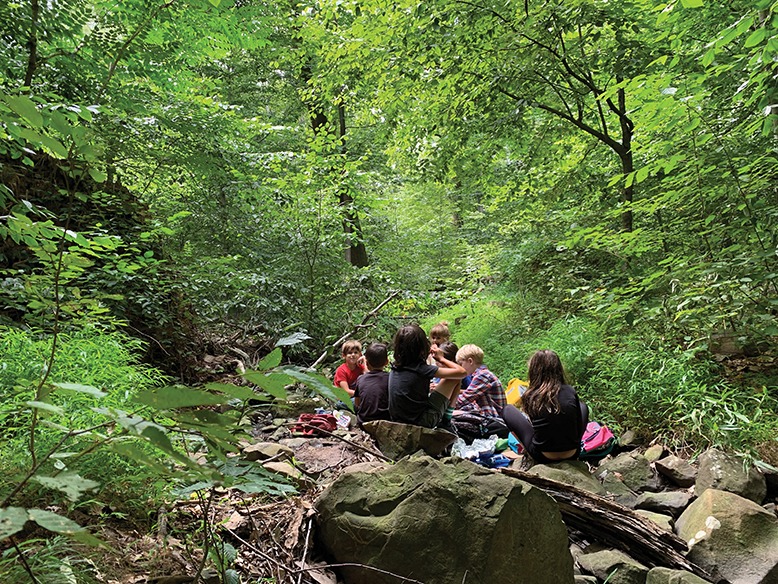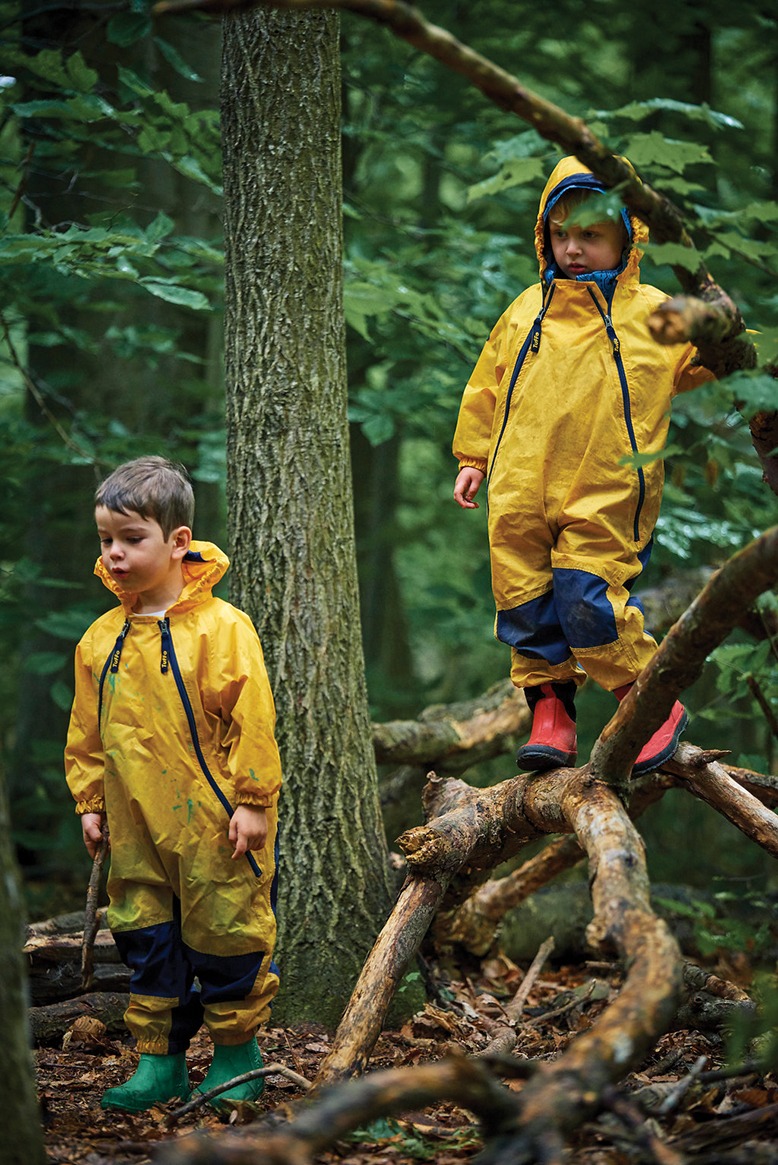The kindergarteners sit in a circle for their daily arithmetic lesson before two piles of objects that demonstrate addition and subtraction. Answering the first question correctly, a boy claps his hands excitedly, eliciting praise from the teacher.
The lesson is punctuated by the drum of a downy woodpecker a few dozen yards away, beyond the clearing where the children sit in a circle of logs, clad in all-weather gear. The counted objects? Acorns and stones culled from the surrounding South Mountain Reservation woods.
It’s a typical morning at Maplewood Outside School, one of a growing number of forest schools located across New Jersey.
Pandemic-related safety concerns and a desire to limit screen time have fueled a rise in outdoor learning environments, says Monica Wiedel-Lubinski, executive director of the Eastern Region Association of Forest and Nature Schools. The organization’s 1,110 members range from self-contained, full- and part-time kindergartens and preschools to traditional public and private elementary schools that integrate environmental experiences into their curriculums. In between are afterschool programs like Earth and Sky School, which meets at a local county park.

Children in the Maplewood Outside School learn math, art, music, journaling and more in the woods. Photo courtesy of Maplewood Outside School
“Nature is the preeminent teacher,” says Earth and Sky director Angelique Kenney, a former public school teacher. “Almost everything here has something to show us. Acorns fall near the oak trees. Maple pods drop and blow farther away.” The now year-round program grew from a summer camp program Kenney started in 2019.
Now, rain or shine, 15 children between the ages of 4 and 9 head there a few times a week: after school, during breaks, and in the summer. Counselors lead hikes and guide their charges between stations such as base camp and a “listening log,” examining animal tracks, building stick forts and, in winter, igloos.
The developmental benefits of outdoor learning are well-documented. It fosters children’s physical, social, emotional and cognitive growth, notes Wiedel-Lubinski. “With a daily dose of sunshine and healthy, active play, children gain foundational skills across all domains,” she says.
Students learn artistic skills, too. Their math exercise and home-brought lunch over, the kindergarteners at Maplewood Outside School crowd around a music and dance teacher, newly arrived with drums and sticks. The kids sway in time with the breeze, imitate her bird calls, and execute deep pliés as “gravity,” she says, “pulls us down to the roots.”

Maplewood Outside School class takes place at the South Mountain Reservation. in Essex County. Photo courtesy of Maplewood Outside School
School founder-director Christy Zolty also incorporates poetry and journaling, Spanish, and visual arts into the curriculum, with specialized instructors supplementing regular teachers. Tuition ranges from $1,700 per month for kindergarten and up to $9,800 per year for preschool.
Maplewood Outside School is a learning program that is held outside, no matter the weather, for children ages 2-7. If the weather is severe, classes will move to an indoor location. In the winter, kids bundle up with coats, boots, hats and mittens, and when it rains, they wear protective gear. When children need to use the bathroom, they walk to a travel potty in a tent that is provided by the school; the teachers also change diapers.
Back to free time, two girls mount a seesaw fashioned from a fallen branch and a boulder. “It used to be a castle, but we changed it,” says Millie, a 5-year-old in her third year at the school. “It took a lot of work.”
It’s exactly the type of experience outdoor school parents seek for their children.
“We want them to have a deep love and appreciation for the forest, learn how to problem-solve and work empathetically with others,” says Sarah Clore, of South Orange, who has children in the kindergarten and pre-K classes. “We can’t believe our good fortune that they get to learn and play there every day.”
The post NJ Forest Schools Take the Classroom Outside appeared first on New Jersey Monthly.